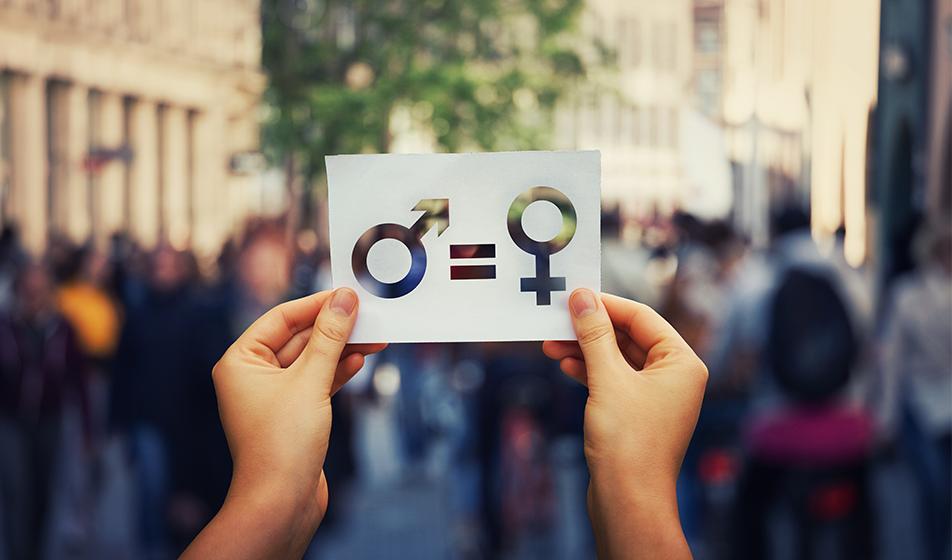Despite the equal pay act of 1970, it’s clear that most workplaces are a long way from achieving true gender equality.
Shockingly, McKinsey research shows that for every 100 men promoted from entry-level roles to management positions, only 87 women are promoted - and only 82 women of colour are promoted. This isn't a new trend, either, unfortunately - this has been the case for 8 years running.
Even without surveys & research, we know the facts. Women are paid less, promoted less often and tend to work in different sectors to men.
In addition to unequal opportunities, women are more likely to be subject to discrimination and sexual harassment at work and are taken less seriously.
What causes gender inequality in the workplace?
How does gender inequality affect the workplace?
Examples of gender imbalance in the workplace
How can employers address gender imbalance in the workplace?
What causes gender inequality in the workplace?
The causes of gender inequality are numerous and interrelated. Many are related to our society while other factors may be related to individual organisations. Some of the biggest causes of gender inequality are:
-
Women are more likely to need flexible work
Like it or not, many women are still the main caregivers, something that’s the case with childcare and eldercare. For this reason, lots of women need greater flexibility to be able to work. Organisations who don't provide flexible working options or family-friendly policies automatically limit the number of women who work for them. -
A limited number of flexible work opportunities
Unfortunately, job design for many roles assumes the person doing the role must be full time. This means people who want or need a part-time job must compromise on the type of role and salary potential available. This reduces the opportunity for women to work in certain types of roles. -
Unconscious bias
Women are negatively affected by unconscious bias in many ways. From behavioural expectations to an assumption that a woman in her late 20s or early 30s will soon depart to have kids, unconscious bias can reduce a woman’s opportunity of getting a role and progressing once in place. -
The ‘broken rung’
It’s commonly stated that the biggest obstacle preventing women from advancing in their careers is the ‘broken rung’ – the first step from an entry-level role to that of a manager. This can mean women are disadvantaged in the workplace from the start. It also reduces the number of women in more senior roles because the talent pipeline has so few women ready for promotion. -
Pay secrecy
There’s no legal requirement for businesses to be open about what they pay their employees. The Fawcett Society found that 60% of women either don’t know what their male colleagues earn or believe they are earning less than men doing the same job. -
Occupational segregation
Societal expectations and a need for flexibility mean that many women end up working in lower paid, less stable roles such as caregiving, hospitality and administration.
What is the gender pay gap?
The gender pay gap is the difference between the average earnings for men and women. In contrast, unequal pay would be a difference in earnings between men and women for exactly the same job.
In 2022, the ONS reported that the gender pay gap among full-time employees was 8.3% - up from 7.7% in 2021.
It’s not pretty, whichever way you look at it. The question however is; if unequal pay is illegal, how does the gender pay gap exist?
Much of the reason comes down to the structure and norms within organisations. Perhaps women are routinely overlooked for promotion or most of the lower paid roles are given to women while men occupy higher paid roles. In this case it would stand to reason that there will be a difference in the average pay between men and women.
Other factors contributing towards a gender pay gap include:
- Women being more likely to take career breaks to raise a family and then returning to work on a part-time basis.
- Unconscious bias which makes assumptions about female ambition and salary goals.
- A confidence gap where women are less likely to apply for promotion unless they possess all the qualifications listed for the job. In comparison, men are happy to apply for a role if they think they can meet 60% of the qualifications needed.
- Pay secrecy allowing pay discrimination to go unchecked.
How does gender inequality affect the workplace?
It’s easy to assume that gender inequality is only a societal problem and not one which damages the workplace. After all, if talented individuals are filling vacant roles, does it really matter what the gender balance is?
The answer is a resounding yes, it does matter.
Repeated studies by McKinsey have found that companies with a balanced split between genders are more likely to outperform less balanced companies. Incidentally, this is also the case for workplaces with a strong ethnic and cultural diversity.
Organisations that allow gender inequality build a self-perpetuating situation where talented women leave for greater opportunities in other businesses. These businesses limit themselves to just 50% of the available talent in the employee market. What’s more, limited diversity can cause groupthink, a situation where consensus becomes more important than a full evaluation of the consequences. This can stifle creativity and individuality and result in poorer business results over time.
Some examples of gender imbalance in the workplace
The press is full of examples of companies and industries that have fallen foul of gender inequality.
Asda fell foul of the equal pay act when store staff claimed they were entitled to pay that was equal to their colleagues at Asda’s distribution centres. The store workers argued that they were historically paid less than distribution workers because of their gender division. Most store workers are female, most distribution workers are male. Distribution workers received between £1.50 and £3.00 more per hour than their store-based counterparts. The supreme court agreed with the store staff’s claim and Asda lost a subsequent appeal against the judgement.
EasyJet has one of the worst gender pay gaps at 45.5% - a result of the fact that 94% of their pilots (accounting for a quarter of the workforce) are male. However, rather than argue the case, EasyJet took action and launched an initiative to target increasing the number of female cadet pilots. With this in place, they’ve taken the proportion of women among their new pilots to 13%.
The BBC has come under fire for unequal pay since it was forced to publish details of employees earning over £150,000. Women were revealed to have made up only a third of the top earners. Since then, several high-profile women have come forward and either quit (as in the case of Carrie Grace, the former China editor) or gone to an employment tribunal (as with TV presenter Samira Ahmed).
How can employers address gender imbalance in the workplace?
There are many ways in which employers can address a gender imbalance in their workplace. Here are a few places to start.
Flexible working
-
Wherever possible, advertise jobs as flexible, including senior roles.
-
Encourage senior leaders to champion and role-model flexible working.
-
Improve workplace flexibility for all employees by making flexible working requests easy, designing more flexible jobs and training line managers to manage flexible workers.
-
Review your policies on flexible working and parental and carers’ leave and publish them for potential candidates to see.
A safer, fairer workplace
-
Take a zero-tolerance approach to unequal treatment, discrimination and harassment.
-
Empower employees so that they feel able to file formal complaints in the instance of discrimination and harassment.
-
Nurture a culture where parents feel able to take full maternity, paternity and shared parental leave. Even better, request senior leaders to role-model these behaviours.
-
Ensure employees are paid equally for the work they do. Review payroll data and pay for performance to ensure equality is an outcome as well as an intention.
-
Be open about how much you pay your employees and discourage pay secrecy.
-
Create a culture that supports the recognition of unconscious bias. More than just unconscious bias training, can you support one another in calling out where unconscious bias might be taking place?
Opportunity for all
-
Review job application data. Are men and women applying in equal numbers for new roles? How many women are actually being recruited? How could you attract more women to apply vacant positions?
-
Review your recruitment practices to create job adverts which are written with inclusivity in mind.
-
Ensure the language used in job adverts is gender neutral. Vacancy listings often contain elements of unconscious bias that can affect someone's decision to apply for a role.
-
Review workplace data to understand the points at which women fail to progress or leave your organisation. Where is your ‘broken rung’? Is there anything you could do to prevent women from leaving once they’ve had children?
Gender equality at work doesn’t need to be an impossible dream, but it will take work. A strong company culture is one way to start to address gender inequality. You can find out more about the Breathe Culture Pledge here.

Author: Laura Sands
Laura is a writer who enjoys getting into the detail of subjects and sharing that knowledge with snappy, interesting content. When not typing away, she enjoys walks in the woods and curling up with a good book and mug of something hot.





